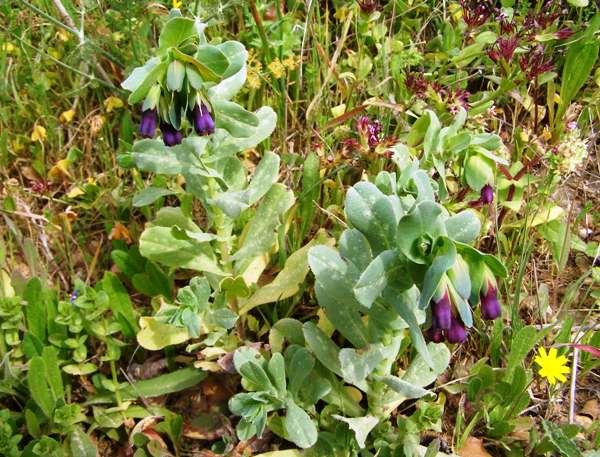Cerinthe major - Honeywort
Phylum: Magnoliophyta - Class: Liliopsida - Order: insertae sedis - Family: Boraginaceae

Honeywort, a member of the family Boraginceae, is mainly found on the coast; it is a curious-looking plant with a leaf and flower stem which gradually uncurls. The flowers shown above are creamy-yellow, but there is also a deep purple form, shown below. Both colour forms are found in Portugal.
Description
Typically 2o to 40cm in heightbut occasionally growing to 70cm, Honeywort in an annual and produces tubular flowers typically 22mm long and 6mm in diameter. Young flowers have a sweet scent.
Leaves of Cerinthe major are alternate, spatulate (spoon shaped) and stalkless.
Habitat
Generally favouring river valleys and other depressions that provide a degree of water retention, Honeywort is also seen on some dry roadside verges.

Distribution
This plant is common and widespread throughout the Mediterranean region and parts of North Africa, and its range extends eastwards at least as far as Turkey.
Etymology
Cerinthe comes from the greek Keros, meaning wax, and anthos, meaning flower. The implication is that bees were thought to take wax from these flowers. The specific epithet major means greaer; it refers to the large size of the flowers compared with those of other Cerinthe species.

These specimens were photographed at Cape St. Vincent, in the Algarve region of Portugal, during May.
Please Help Us: If you have found this information interesting and useful, please consider helping to keep First Nature online by making a small donation towards the web hosting and internet costs.
Any donations over and above the essential running costs will help support the conservation work of Plantlife, the Rivers Trust and charitable botanic gardens - as do author royalties and publisher proceeds from books by Pat and Sue.

